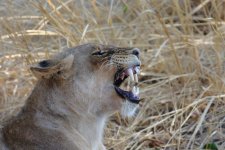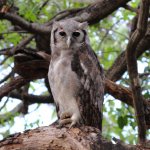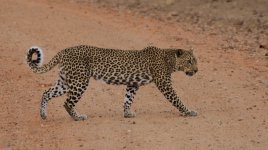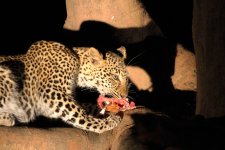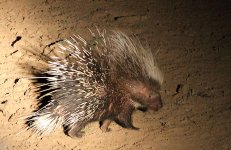MSA
I may be relaxed but I'm not drunk....
I'm not long back from a Naturetrek trip to Zambia, and as I promised the others I'd do a report it forced me to get this done in good time for once, so I've cut and pasted the report below. Recuperating from a double hernia op a couple of weeks ago also helped to remove most distractions!
So, how did a birder end up on a Naturetrek “bargain mammal tour” to Zambia? Like many birders, I also have a general interest in all wildlife, and having turned 50 last year I wanted to experience as much of the world as I could before I became a dribbling wreck, or the wildlife disappeared through poaching and over-development; a safari was top of my to-do list. Initially this was to be a joint trip with my wife, but the thought of 29 hours’ travelling scuppered that idea! At an all-in price of around £3k the Naturetrek trip was the best I could find price-wise, and at 10 days including travel fitted my availability better than a 14-day plus tour; month-end travel was a no-no from a work viewpoint, so the mammal trip suited best. Other appealing aspects included the low number of visitors to the country (the idea of joining a large circle of land-rovers around each animal did not appeal), and the possibility of seeing Leopard.
My journey started from Verwood on Sun 9 November at midday, with the first wildlife spectacle being in a bus shelter at Ringwood. A continuous feeling of itchiness around my head and shoulders was explained when I realised I’d walked into a colony of tiny spiders and was covered with them! Flights (with Emirates) from Heathrow to Dubai, then on to Lusaka, were uneventful and on-time; apart from a couple of obvious sightings on the first two flights, we only congregated as a group at Lusaka prior to the light aircraft flight with Proflight to Mfuwe, arriving just before sunset. A push to get one of the land-rovers started, and we were away!
So, how did a birder end up on a Naturetrek “bargain mammal tour” to Zambia? Like many birders, I also have a general interest in all wildlife, and having turned 50 last year I wanted to experience as much of the world as I could before I became a dribbling wreck, or the wildlife disappeared through poaching and over-development; a safari was top of my to-do list. Initially this was to be a joint trip with my wife, but the thought of 29 hours’ travelling scuppered that idea! At an all-in price of around £3k the Naturetrek trip was the best I could find price-wise, and at 10 days including travel fitted my availability better than a 14-day plus tour; month-end travel was a no-no from a work viewpoint, so the mammal trip suited best. Other appealing aspects included the low number of visitors to the country (the idea of joining a large circle of land-rovers around each animal did not appeal), and the possibility of seeing Leopard.
My journey started from Verwood on Sun 9 November at midday, with the first wildlife spectacle being in a bus shelter at Ringwood. A continuous feeling of itchiness around my head and shoulders was explained when I realised I’d walked into a colony of tiny spiders and was covered with them! Flights (with Emirates) from Heathrow to Dubai, then on to Lusaka, were uneventful and on-time; apart from a couple of obvious sightings on the first two flights, we only congregated as a group at Lusaka prior to the light aircraft flight with Proflight to Mfuwe, arriving just before sunset. A push to get one of the land-rovers started, and we were away!




